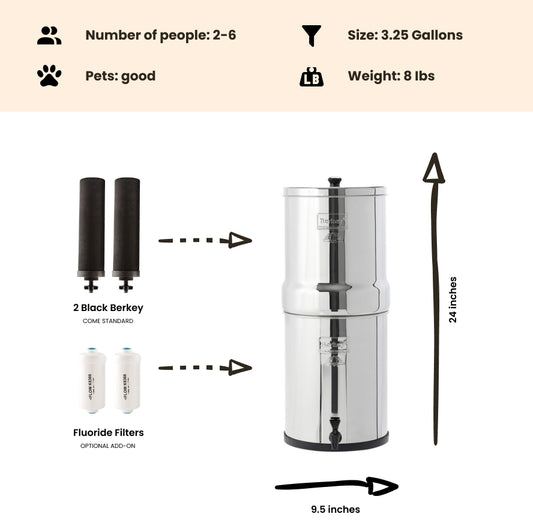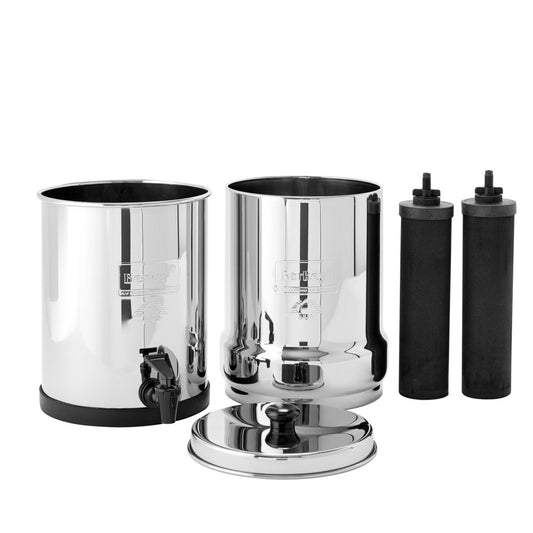Surge in Water Use in North Dakota Attributed to Oilfield Expansion and Influx of Temporary Oilfield Workers
By Dan DeBaunShare
The surge in water use in North Dakota's rapidly expanding oil industry is not only due to increasing demand as a result of more oil wells, but is also attributed to the influx of people to the Bakken oil shale region, according to a study recently conducted by the US Department of Energy (DOE).
The recent expansion of oil fields in the Bakken shale region has drawn thousands of oil workers into the area. Between 2010-1012, approximately 24,000 temporary oil industry workers flocked into the area, boosting Williams County's existing permanent population of 27,000 considerably.
According to Corrie Clark, an environmental systems engineer in the Argonne National Laboratory's Environmental Science Division, and a co-author of the paper which was recently published in Environmental Science & Technology: "It is estimated that the average household in the North Dakota Bakken region uses about 80 to 160 gallons of water a day. If each new temporary worker used 80 gallons a day, their total would be more than half the water used for hydraulic fracturing alone. If they used 160 gallons a day, it would exceed the total amount of water used for hydraulic fracturing. Either way, water use by new temporary workers accounts for a big share of the region's increased water use."
The Bakken shale consists of an oil deposit that lies beneath parts of Montana and North Dakota (US), and Manitoba and Saskatchewan (Canada). The annual water consumption for hydro-fracking has risen dramatically since 2008 when annual consumption was 770 million gallons; by 2012 the annual water consumption for hydro-fracking had shot up to 4.27 billion gallons per year.
Over the same four year period, the number of newly drilled oil wells increased more than fourfold, rising from 401 in 2008 to 1801 in 2012. Hydraulic fracturing (or hydro-fracking) — a technique commonly used for oil extraction in shale formations — involves pumping large volumes of water into the wellbore under pressure to fracture the shale rock deep under ground, which releases the natural gas and oil locked within. However, the expansion of oil wells is not the only reason for increased water consumption as a result of oil development in the region.
The study, titled "Water Use and Management in the Bakken Shale Oil Play in North Dakota," notes that due to the unusually high salinity levels found in this formation, well operators need to conduct routine maintenance flushing of 10-15% of the wells in North Dakota's Bakken region to prevent build-up of natural salts. The use of this additional maintenance water is apparently unique to wells within the Bakken shale deposit.
Typically, within the Bakken shale deposit, the frequency of maintenance flushing tends to increase the further west wells are located. Although the publicly available data of water usage for maintenance flushing is limited, the study estimates that this ranges between 400-1400 gallons per day per well that requires flushing.
Wastewater production from fracking operations is also higher in the Bakken shale than other deposits, and has risen from 1.1 million gallons for wells drilled in 2008 to 2.9 million gallons for those drilled in 2012, with most of this water being supplied by Lake Sakakawea. Yet, while the increase in water use from the lake as a result of oil development and associated population growth does not currently pose an issue in terms of continued water availability, Clark points out that by studying the impact that the expansion of the oil industry has on water usage in the Bakken region may assist with determining the impact in other shale deposits.
"While no other play may have experienced an increase in local population as proportionally large and easy to define as the Bakken, temporary oilfield service populations have an impact everywhere," according to the study. "More data collection and further study in the Bakken and elsewhere are needed to better understand, quantify and minimize water impacts of unconventional oil and gas development in the future."
Journal Reference
R. M. Horner, C. B. Harto, R. B. Jackson, E. R. Lowry, A. R. Brandt, T. W. Yeskoo, D. J. Murphy, and C. E. Clark. Water Use and Management in the Bakken Shale Oil Play in North Dakota. Environmental Science & Technology 2016 50 (6), 3275-3282. DOI: 10.1021/acs.est.5b04079
Image suggestions
-
Regular price $234.00 USDRegular priceUnit price / per
-
Regular price $327.00 USDRegular priceUnit price / per
-
Regular price From $367.00 USDRegular priceUnit price / per
-
Regular price From $408.00 USDRegular priceUnit price / per
-
Regular price From $451.00 USDRegular priceUnit price / per
-
Regular price From $478.00 USDRegular priceUnit price / per
-
Regular price $332.50 USDRegular priceUnit price / per
$350.00 USDSale price $332.50 USDSale

Dan DeBaun is the owner and operator of Big Berkey Water Filters. Prior to Berkey, Dan was an asset manager for a major telecommunications company. He graduated from Rutgers with an undergraduate degree in industrial engineering, followed by an MBA in finance from Rutgers as well. Dan enjoys biohacking, exercising, meditation, beach life, and spending time with family and friends.
~ The Owner of Big Berkey Water Filters















